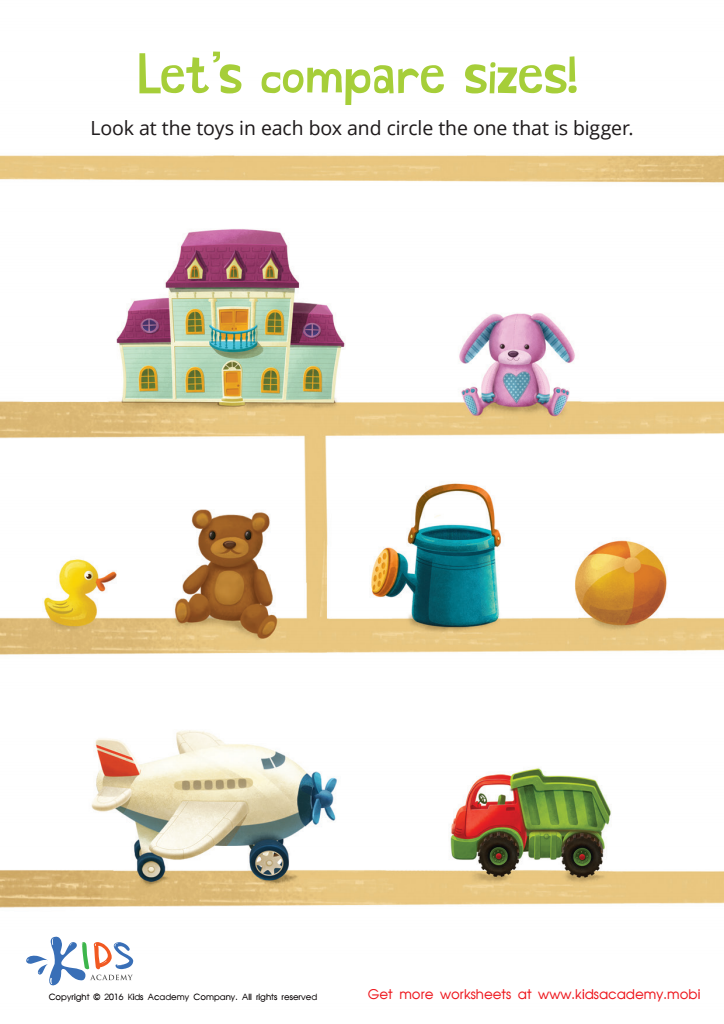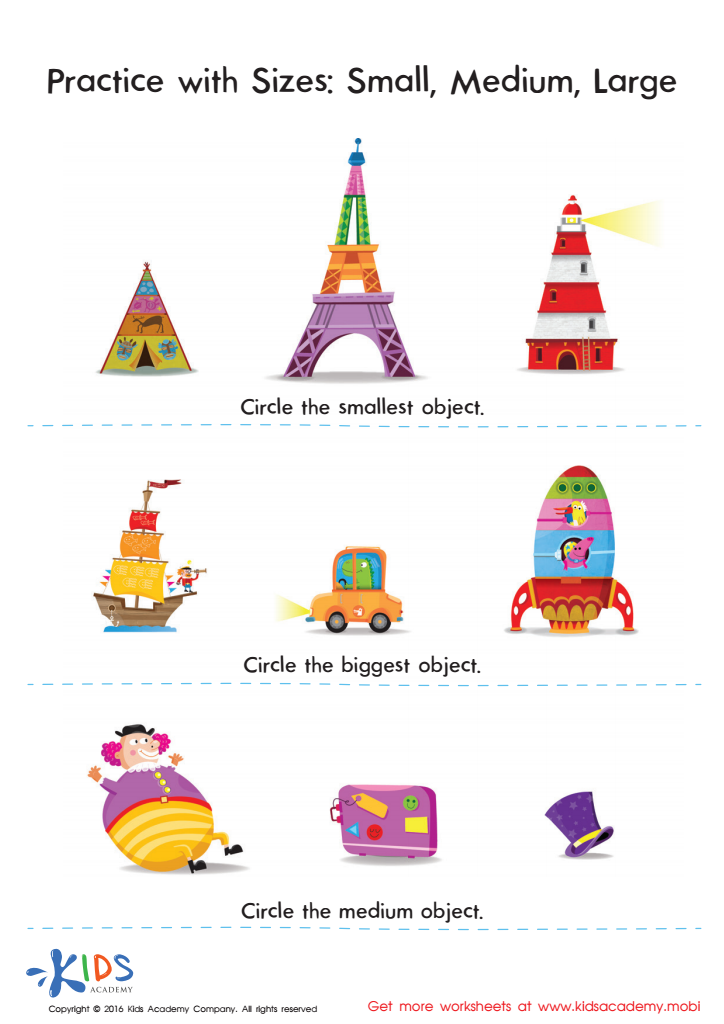Understanding sizes Worksheets for Ages 6-9
3 filtered results
-
From - To
Unlock your child's potential with our "Understanding Sizes Worksheets for Ages 6-9." These engaging worksheets are designed to help children grasp size concepts through fun activities and vibrant illustrations. Perfect for young learners, they encourage critical thinking and enhance foundational math skills. Activities include comparing, ordering, and categorizing sizes, providings a hands-on approach that solidifies understanding. Ideal for both classroom and home use, these resources support your child’s educational journey, making learning interactive and enjoyable. Compatible with various learning paces, they ensure personalized growth. Equip your kids with essential size understanding skills today!


Shapes of All Sizes Worksheet


Classifying by Size Sorting Worksheet
Understanding sizes is a fundamental concept that plays a pivotal role in the cognitive and mathematical development of children aged 6-9. At this stage, children are beginning to comprehend and manipulate basic mathematical principles, and recognizing different sizes helps form the basis for these skills. Mastery of size concepts aligns with learning standards and benchmarks in primary education, contributing to their broader mathematical proficiency.
Grasping size differences enhances a child's spatial awareness, critical for problem-solving and everyday reasoning. For instance, distinguishing between different sizes is essential for activities such as measuring ingredients in a recipe, comparing objects, understanding geography, and interpreting data in graphs. This understanding also spills over into language development, where children learn descriptive and comparative terms like “bigger,” “smaller,” “taller,” and “shorter.”
Moreover, understanding sizes fosters fine motor skills and coordination—a child can more accurately organize and manipulate objects based on size. Crucially, it builds confidence in their ability to comprehend and engage with the world around them, from fitting puzzle pieces together to choosing appropriately sized clothing. By prioritizing this aspect of development, parents and teachers can nurture well-rounded, competent learners poised for future academic and real-life success. Understanding sizes is not merely about math; it's about building a foundational understanding of the world.
 Assign to My Students
Assign to My Students






.jpg)

.jpg)












